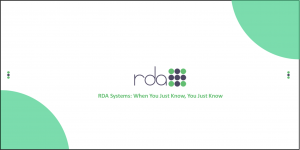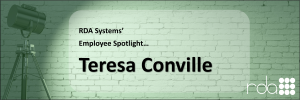In the rapidly evolving world of school districts and municipalities, effective management is paramount. Enterprise Resource Planning (ERP) systems have become essential tools in this endeavor. However, the journey to successful ERP integration is often fraught with challenges. puts it plainly:
“Understanding the challenges inherent in ERP implementation is key to success. Conversely, ignoring the well-known challenges to successful ERP adoption is a recipe for failure.”
Building on our previous article on the subject, let’s explore five key areas where entities frequently encounter difficulties and provide strategies for overcoming these hurdles.
-
Inadequate Needs Assessment
A common pitfall in ERP implementation is the lack of a thorough needs assessment. It’s easy to fall into the trap of feeling “tempted by the potential benefits of a new ERP system to rush the process,” as mentioned in our guide to how to choose an ERP. Yet skipping this crucial step can lead to selecting an ERP system that doesn’t align with the specific requirements of the organization.
For instance, a school district might choose a system more suited for a corporate setting, missing out on functionalities crucial for educational management. The complexity and difficulty of ERP systems make a comprehensive assessment vital for avoiding future inefficiencies and operational issues.
-
Limited Training Program
The effectiveness of an ERP system is only as good as the users operating it. Inadequate training can result in a significant gap between the system’s potential and its actual utilization. What could be more disappointing than having invested in a state-of-the-art ERP system but failing to invest in adequate training, leading to underused features and inefficiencies?
Effective training programs are essential not only during the initial stages of implementation but also as ongoing support. These programs should be comprehensive, covering all aspects of the ERP system relevant to each user’s role within the organization. Tailored training that takes into account the unique needs and skill levels of various user groups can significantly enhance the adoption and effective use of the system.
Additionally, continuous education and support are crucial to accommodate updates and new features of the ERP system. This approach ensures that users stay informed and proficient over time. Providing resources like user manuals, online tutorials, and dedicated IT support can further aid in fostering a knowledgeable user base.
-
Resistance to Change
As American City and County rightly points out, “Implementing an ERP system often involves significant changes to existing business processes, workflows and organizational structures.”
Such sweeping changes often face resistance, primarily due to fears of job security and disruptions to established routines. This resistance is compounded when change management strategies fall short, particularly in communication and employee involvement.
To mitigate resistance, it’s crucial to engage employees early in the ERP implementation process. Effective strategies include transparent communication about the ERP’s benefits and its impact, as well as involving staff in planning and decision-making stages. For example, organizing workshops for hands-on ERP experience can alleviate fears and misconceptions while gathering valuable feedback for system customization.
Leadership also plays a vital role in easing this transition. By demonstrating commitment and openly endorsing the new system, leaders can inspire confidence and foster a more receptive attitude towards change. Ultimately, a comprehensive approach to change management, emphasizing clear communication, employee participation, and strong leadership is key to overcoming resistance and ensuring successful ERP adoption in public sector institutions.
-
Data Migration Challenges
Data migration in ERP implementation is a pivotal challenge for school districts and municipalities, demanding the consolidation of varied data from multiple departments. Each department, often operating independently, brings unique data structures and formats, making their integration into a unified ERP system complex. The challenge intensifies with the large volumes of data such as student records, utility billing, and public safety information whicheach requiring accurate, consistent, and secure handling.
Discrepancies in data during migration can lead to operational disruptions and security vulnerabilities, especially under the stringent legal and regulatory frameworks governing public sector data. Overcoming these obstacles necessitates meticulous planning and the deployment of advanced data migration tools. Involving representatives from all impacted departments early in the planning process is crucial. This not only ensures thorough consideration of all data intricacies, but also fosters a sense of ownership and ease in transition among staff.
Effectively managing this aspect of ERP implementation is key to ensuring a smooth transition and maintaining the integrity and security of critical public sector data.
-
Scalability Oversights
A critical yet often overlooked aspect of ERP implementation in school districts and municipalities is scalability. The ability of an ERP system to adapt and grow with an organization’s evolving needs is paramount.
If not accounted for in the selection of the ERP and the initial stages of use, this oversight can lead to significant operational challenges and necessitate costly system upgrades or even a complete system overhaul. Entities must assess not just their current requirements, but also anticipate future changes and expansions. This includes considering factors like increased student enrollment in school districts, new public services in municipalities, or legislative changes impacting data management.
Wrapping Up: Navigating ERP Challenges for Success
In conclusion, while the path to successful ERP integration is complex, understanding and addressing these common challenges can lead to more effective and efficient management in school districts and municipalities. From conducting thorough needs assessments to ensuring scalability, the key lies in strategic planning and execution.
In an environment where agility and informed decision-making are crucial, ERP systems emerge as powerful tools. By navigating the common pitfalls and leveraging the full potential of ERPs, entities can transform their operational landscape, paving the way for enhanced efficiency and growth.
For more insights and guidance on ERP systems, we invite you to explore RDA Systems. Here, you can find resources to assist you in your ERP journey, ensuring your organization is well-equipped to meet the challenges of today and tomorrow.





